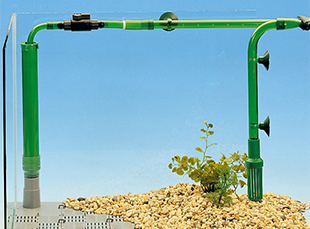Over the years I have found under gravel filters to be the best low maintenance filters.
There are 2 tipping points. Both are relative to stocking density and feeding
Me - High density stocking, high feeding.
1. if run slowly using an air lift they are good for 6 - 12 months then they throw out ??? bacteria, or fast growing string algae around the outlet. and any plants near
2 you need to give the gravel a major wash every few months, it depends on your balance
(Tried Fluvals - 304/5 need doing every 3 weeks)
The slower you go the larger the area it "sucks " from, the higher power , power heads tends to concentrate the suction around the base of the uplift pipe. diminishing the effectiveness.
I read somewhere it takes bacteria around 20 mins to convert ammonia to nitrate, think it was a Matten filter place, / group, anyway flow speed is important
I used purple dye (Potassium permanganate) in a 2ft tank to figure this out a few years back. I came to the conclusion, undergravel filters are great until they become overloaded, after that you need sponges, to get rid of the "dusty" outflow.
It's simply a balance too many fish to much food and bateria go rampant as well as algea, I see algea as natures way of telling me something is out of balance. Further along, green water is ok, brown not so good, white is bactirial watch it 24H should clear , if grey change it quickly.
Simply if your tank runs well with a foam /sponge filter an undergravel filter will mean you need less maintenance.
Me I over feed, I overstock, I have started a constant flow system, new water in, old water out.
It all depends on what your doing or your ideas, me breeding goldfish, a 8" x 10" x 16 tank is ok while they are babies I have lots of flow. I run undergavel filers after them a big plant tank, I like them, I also have constant flow of new water as well.. its all down to "the " balance.
Water Flow = Oxygenation
O2 = life



